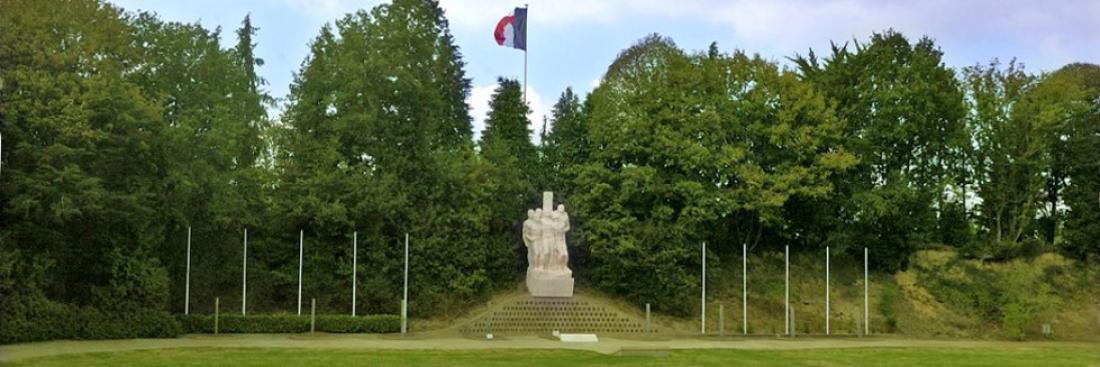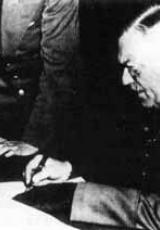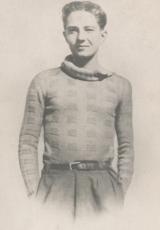La politique des otages sous l'Occupation

Corps 1
The policy regarding hostages under the Occupation For a long time the execution of hostages has been a blot marking the dark years in the memory of the French nation. Not just because it obviously involved death, but also because of the circumstances it seemed to mark the lowest point of the occupation, demonstrating the ultimate cruelty of a desire to kill men not for what they had done but in order to cause terror by way of reprisals. And lastly, because the digging of this bloody ditch between the occupying Nazis and the French people signalled a kind of admission of failure.
Corps 2
Following the victory of the German armed forces in June 1940, the primary strategic objectives of the occupant were perfectly clear and remained so throughout the Occupation. They had to tap into local resources. They also had to ensure the safety of troops and other German services. This desire for security is directly linked to our subject as it explains why in 1941, the execution of hostages was a response to what was perceived as a threat, as well as why it had not previously been used, not being, in the eyes of the Germans, warranted by the situation.
Of the range of repressive tools available to the occupying forces, there was a preference initially for classic judicial/policing procedures. Neither did it rule out administrative internment, though on a much smaller scale than the Vichy government. Collective reprisals were also the order of the day when the culprit could not be identified: hostages were even selected from the nobility, but such selection was not yet to lead to an execution.
Thus it was the Militärbefehlshaber in Frankreich (MBF, the military commander) who controlled Paris. The Sipo-SD was also involved, under the leadership of Knochen, but this organisation, commonly known as the Gestapo (the Gestapo being in fact the executive arm of the Sipo and SD), had only a marginal influence at the beginning. It continually gnawed away at the police powers reserved initially for the army. The hostage issue was crucial in this conflict of duties. From 1940, the execution of hostages thus became an option in principle. But the summer of 1941 brought about a major breakdown, as the set-up changed completely. German aggression against the Soviet Union broke the Germano-Soviet pact and the systems of representation were reorganised: for the Germans, their new front line helped create the concept of "Judeo-Bolshevism" which was soon to become central to the policy on hostages. For the communists, the war was no longer imperialist, with those powers equally responsible for the troubles in the world pitted against each other; it had become a just war, supported by an anti-Nazi, anti-fascist alliance of nations and people. Consequently the French communist party (le Parti communiste français or PCF) became increasingly involved in the armed struggle, as the Red Army's rapid defeats along the Eastern front created the sort of diversion requested by the Communist International. The battlefront was everywhere. On the 21st August 1941, Fabien (Pierre Georges) killed the naval officer, Moser, in the Barbès underground station.
The hostage code
Following the murder at Barbès, the German authorities ordered the execution of hostages as a response to the killings. This began with the announcement that "all French people held in any kind of detention whatsoever by the German authorities or on behalf of the German authorities in France" were considered to be hostages. On the 16th September, at the request of Hitler, Keitel laid down in law that a ratio of 50 or 100 "communists" would be executed for every German soldier. In France, the rules were established on the 28th September by Otto von Stulpnagel, Militäberfehlshaber in Frankreich, in a "hostage code". For their part, the communist leaders found themselves facing a threefold obstacle: police pressure had become too strong in Paris; a number of militants proved reluctant when faced with the kind of action that belonged more to anarchist than communist principles; and so the people would not accept this kind of struggle. On the 20th and 21st October 1941 it was therefore Parisian militants who shot down the Nantes Feldkommandant and a Bordeaux military governor. By way of reprisals, 48 hostages were executed in Châteaubriant, Nantes and Mont Valérien, followed by 50 in Souge, near Bordeaux.
Following a new wave of attacks at the beginning of December, 95 communists and/or Jews suffered the same fate. The Jews were chosen from the camp at Drancy, the communists from those at Compiègne and Châteaubriant, from the prisons at Fresnes, la Santé and Fontevrault and the Fort de Romainville.
The protagonists in France were immediately aware that the main issue lay in public opinion and not in the military efficiency of such acts of resistance. Military action was measured from a political standpoint, which was the case for the three key players involved, the PCF, Vichy and the occupying forces. We will not find any claim for responsibility for the Barbès murder in the underground L'Humanité newspaper. When it came to the execution of hostages, the terror argument was turned against the Germans and, when they saw the public's general rejection of these large-scale reprisals, the PCF were able to make an argument of the "an eye for an eye, a tooth for a tooth" kind. The observers at police headquarters in Paris were not wrong. In a report dated the 27th December 1941, some time after the mid-December executions, it is stated, "in the light of this situation, the communist leadership has decided to react energetically and make the most of the indignation of the people (...). They are going (...) to try to encourage all French people to become involved in their terrorist campaign by inciting them to take revenge on the innocent victims of German repression and avenge the murderers. Such propaganda runs the risk of ringing a favourable chord in social circles because of the discontentment and hostility caused by the methods of repression used by the German authorities and we must expect a renewed outbreak of acts of terrorism." In a directive released in February or March 1942, Jacques Duclos, the head of the communist resistance in France was clear: it was a question of breaking away from society's apathy and he was convinced that, if attacks increased, repression would not be able to keep pace.
This issue of public opinion also held true for the Vichy regime, which, even before the first attacks, had gone through a stage of radicalisation. Thus the effective introduction of special sections came some time after the assassination at Barbès, although the vice-chairman of the council, Darlan, had himself asked on the 25th June 1941 for urgent attention to be given to studying "the creation of an exceptional jurisdiction". Following the murder and the establishment of these exceptional jurisdictions, the tension became acute and the occupying forces increased pressure, whilst the Vichy regime became only too aware of the danger it was itself running in associating itself with the execution of hostages. In the autumn unrest, Pierre Pucheu, the French minister for the interior, distanced himself in as much as his representative Chassagne took little or no part in the choice of the hostages who were finally executed in Châteaubriant. It was a fatal error and Pucheu immediately pleaded for autonomy for his police force, praising its efficiency, rightly in this case. In not being able to prevent Nazi radicalisation, the very French state that had opted for state collaboration, found itself weakened once more.
The military powers of the MBF also weighed up the political consequences of these executions of hostages. We can take two examples. On the 23rd October 1941the Kreiskommandant in Châteaubriant was responsible for the execution of 27 hostages from the Choisel camp, amongst them the very young Guy Môquet. A rare document provides detailed insight into how the operation unfolded showing, at each stage, both the heroism of the martyrs and the attitude of the authorities. It was a report written in January 1942 by the assistant Inspector General of the administration departments for the attention of Pucheu. To recap, the 27 hostages were segregated in a barracks of the camp where they wrote their last letters to loved ones. They came out singing La Marseillaise and L'Internationale, with the whole of the camp joining in. On passing through the camp gates they filed between two rows of gendarmes. In an extraordinary act, the head of the camp ordered his men to present arms in tribute to the victims to be. German soldiers led the 27 hostages to the clearing.
The executions were held in groups of 9. None of the prisoners chose to wear the blindfold offered to him. When it was all over, the Kreiskommandant turned to the head of the camp and the sub-prefect: "The winners today" he told them "are those who are dead". The MBF, Otto von Stülpnagel, observed matters at a distance, but he was not far from sharing the opinion of his deputy, albeit in a more political way. On the eve of the execution, and again following the mid-December unrest, he warned his superiors, indicating the major political damage of having such a policy. On the 15th January 1942, he requested the full power to choose the best methods for fighting against the "terrorism". The following month he went to Berlin to explain himself to Hitler; but he was only received by Keitel, who disapproved of him. Even so, it was not the humanist speaking, it was the politics. He was convinced that continuing with the hostage policy would increase the gulf with public opinion whilst weakening Vichy's control and calling into question once again the efficiency of repression and the French police force. He did not however back down on extreme measures. He implemented the large-scale deportation of Jews and communists to the East by way of reprisals (still fighting against "Judeo-Bolshevism"). The first convoy scheduled for the end of December was delayed for technical reasons. In fact the first convoys of the "final solution", in March and June 1942, were reprisal convoys, comprising "Jewish hostages". On the 6th July 1942 a convoy of about 1200 communist hostages left Compiègne.
Towards another policy
Deeply disapproved of by Keitel, Otto von Stülpnagel resigned. Although replaced by his cousin Karl, this thus sped up the process already underway, resulting in the official appointment on the 1st June 1942 of Karl Oberg as commander in chief of police and the SS in occupied territories.
Police control thus passed to the military at the Sipo-SD. For all that, Oberg had fully understood the issues. Taking advantage of Laval's return to power and the appointment of Bousquet as Police chief of staff, he gave priority to police collaboration. For Bousquet, it was a way of asserting the authority of the French state, the northern zone included, even if it meant taking responsibility for carrying out the objectives of the occupying forces. For Oberg, it was a question of being effective. At his trial after the war he was also to say: "It was in our interests for the French police force to be united under one governing body (...). In accordance with the agreement that I had established with Bousquet, the French police acted independently but within a common line of conduct with the German police and under Bousquet's authority."
It could not have been made clearer. However, the "hostage policy" was not abandoned, but executions were held jointly in order to increase the effect of intimidation and give the police time to find those guilty. 88 hostages were thus executed by firing squads on the 11th August 1942. On the 21st September there were 116, the largest number in the whole of the Occupation. But Oberg realised that his favoured protocol was no longer effective. He also had to admit that it risked interfering with the new French law for the requisition of workers introduced on the 4th September 1942. At the same time the French police were very efficient. The firing squad arranged for the 15th October was therefore postponed and eventually cancelled. The hostage policy was suspended. There was just one exception to the new rule: following the attack on Ritter, Gauleiter Sauckel's representative in France, by the FTP-MOI from the Paris area, 50 hostages taken to the fort at Romainville were executed in October 1943.
Following the autumn 1942 suspension, those hostages who had not been shot were deported in special convoys: in fact the Sipo-SD decided to deport them to a concentration camp, using the guarantee of secrecy provided by the decree now known as Nacht und Nebel, or Nomen Nescio, the German equivalent of "X". Hundreds of resistance fighters were sent secretly in this way to the Reich's concentration camps. Between Between September 1941 and October 1943, 735 people were thus executed as hostages at German military headquarters in Paris. If we add the 75 hostages from the Nord and Pas-de-Calais areas, which came under the command of Brussels, we reach a total of 810.
Source : Denis Peschanski, Director of research at the CNRS, CHS, université Paris 1 Panthéon-Sorbonne and CNRS. Thomas Fontaine, Doctoral student, CHS, Paris 1 Panthéon-Sorbonne and CNRS, associate researcher to the Resistance Foundation.



